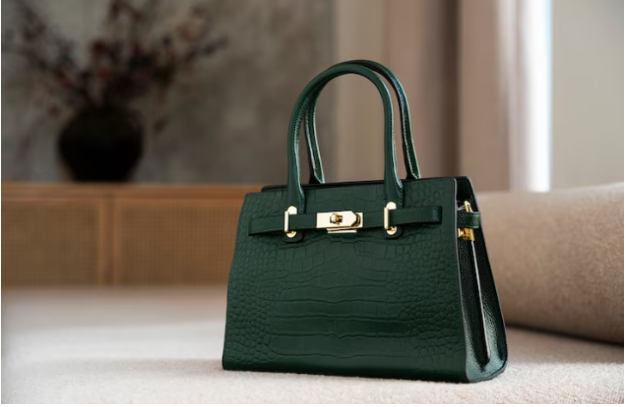The Ultimate Guide to Newborn Photography: Tips for Beginners

Hey there, new or aspiring photographers! So, you’ve got a camera and a passion for capturing life’s most precious moments. There’s nothing quite like the magic of photographing newborns. Their tiny fingers and toes, those sweet little yawns, and the peaceful slumber can make for some truly heartwarming images. But, as adorable as they are, newborns can be tricky subjects. Don’t worry, though – this guide will walk you through everything you need to know to get started with newborn photography, from the equipment you’ll need to the best poses and safety tips.
Why Newborn Photography?
First off, let’s talk about why newborn photography is so special. Those first few weeks of a baby’s life are fleeting and filled with once-in-a-lifetime moments. Parents want to capture these early days to remember just how tiny and delicate their little one was. As a photographer, you get to be a part of these precious memories, creating images that families will cherish forever. Plus, there’s something incredibly rewarding about seeing the joy on parents’ faces when they see the beautiful photos of their newborn.
Getting the Right Gear
Before you dive into newborn photography, it’s essential to have the right equipment. Here are the basics:
Camera and Lenses
You don’t need the most expensive camera on the market, but a DSLR or mirrorless camera with manual settings is a good start. These cameras give you more control over your shots, which is crucial for capturing those tiny details.
For lenses, a 50mm prime lens is a favorite among newborn photographers. It’s versatile, great in low light, and perfect for those close-up shots. A macro lens can also be useful for capturing fine details like eyelashes and tiny toes.
Lighting
Natural light is your best friend when it comes to newborn photography. Aim for soft, diffused light from a window. If natural light isn’t an option, consider investing in a softbox or continuous lighting setup to mimic that gentle, even lighting.
Props and Accessories
Blankets, wraps, hats, headbands, and baskets are popular props in newborn photography. Keep it simple and avoid anything that might be uncomfortable or unsafe for the baby. Neutral colors and soft textures work best.
Safety Gear
Safety should always be your top priority. Make sure you have a spotter – usually, a parent – to help keep the baby safe and comfortable. Never place a newborn in a position that looks unsafe or uncomfortable, and always have someone nearby to assist.
Setting Up Your Shoot
Creating a Comfortable Environment
Newborns are sensitive to their surroundings, so creating a calm, warm, and comfortable environment is key. Keep the room temperature warm, around 80 degrees Fahrenheit, to ensure the baby stays cozy. Use white noise or soft music to help soothe the baby and keep them relaxed during the shoot.
Timing is Everything
The best time to photograph a newborn is within the first two weeks of life. During this period, babies are sleepier and more likely to stay in those adorable, curled-up positions. Plan your shoot for mid-morning when babies tend to be the sleepiest.
Preparing the Parents
Communicate with the parents beforehand to ensure they know what to expect. Encourage them to feed the baby right before the session to ensure they’re full and sleepy. Remind them to dress the baby in loose-fitting clothes to avoid marks on the skin.
Posing Techniques
Posing newborns can be challenging, but with patience and practice, you’ll get the hang of it. Here are some classic poses to start with:
The Curled-Up Pose
This is one of the most popular newborn poses. Gently tuck the baby’s legs under their body and position their arms near their face. This pose mimics the fetal position and looks incredibly natural.
The Tummy Pose
Lay the baby on their tummy with their arms tucked under their head. This pose is great for capturing those adorable facial features and tiny hands.
The Back Pose
Place the baby on their back with their arms and legs slightly bent. This is a simple and safe pose that allows you to capture the baby’s face and full body.
The Wrapped Pose
Wrapping the baby snugly in a soft blanket can help them feel secure and content. Experiment with different wrapping styles and angles to create a variety of looks.
Capturing the Details
Don’t forget to capture the tiny details that make newborns so unique. Close-ups of their hands, feet, eyelashes, and lips can add a beautiful, personal touch to your photos. Use a macro lens or the macro setting on your camera to get those super close-up shots.
Editing Your Photos
Editing is where you can really bring your photos to life. Here are some tips for editing newborn photos:
Keep It Natural
While it’s tempting to go overboard with editing, less is often more. Aim to enhance the natural beauty of the baby rather than altering their appearance. Adjust the brightness, contrast, and sharpness to make the image pop without looking too artificial.
Soften the Skin
Newborn skin can be blotchy or have redness, which is completely normal. Use a soft brush to gently smooth out the skin, but be careful not to overdo it. You want the baby to look natural, not like a plastic doll.
Highlight the Details
Bring out the tiny details by sharpening the eyes, lips, and other focal points. This will help draw attention to the most important parts of the image.
Building Your Portfolio
As a beginner, building a strong portfolio is essential. Offer free or discounted sessions to friends and family to gain experience and create a diverse collection of images. Focus on quality over quantity – a few stunning photos will speak louder than dozens of mediocre ones.
Marketing Your Services
Once you have a solid portfolio, it’s time to start marketing your services. Here are some tips to get started:
Create a Website
A professional website is a must-have for any photographer. Showcase your best work, provide information about your services, and make it easy for potential clients to contact you.
Use Social Media
Social media platforms like Instagram and Facebook are great for reaching new clients. Post regularly, use relevant hashtags, and engage with your audience to build a following.
Network with Other Professionals
Connect with local maternity and baby stores, pediatricians, and birthing centers. Building relationships with these professionals can lead to referrals and new business opportunities.
Pricing Your Services
Pricing can be tricky, especially when you’re just starting. Research what other newborn photographers in your area are charging and set your prices accordingly. Consider offering packages that include a certain number of edited photos, prints, and digital files.
Staying Inspired
Photography is an art, and staying inspired is crucial for your growth and creativity. Follow other newborn photographers on social media, attend workshops, and experiment with new techniques and styles. The more you practice, the more confident and skilled you’ll become.
Conclusion
Starting your journey into newborn photography can be both exciting and overwhelming. Remember to be patient with yourself and the little ones you’re photographing. With the right gear, a comfortable environment, and a lot of practice, you’ll soon be creating beautiful images that families will cherish for a lifetime.
If you’re ready to dive into the wonderful world of newborn photography, remember that every session is a learning experience. Keep experimenting, stay inspired, and most importantly, enjoy the process of capturing these fleeting, precious moments. Happy shooting!


